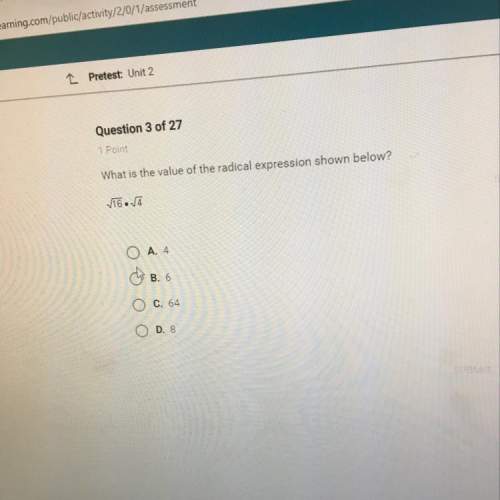
Mathematics, 15.10.2020 07:01 savannahvargas512
A business statistics professor at a college would like to develop a regression model to predict the final exam scores for students based on their current? GPAs, the number of hours they studied for the? exam, and the number of times they were absent during the semester. The data for these variables are in the accompanying table. Complete parts a through d below. ScoreGPAHoursAbsences682.5330692.26 43702.62.51723.090.50743.0864762.74 3.55773.351.50782.9933792.9923782.8 42.52792.84.50813.4371823.2631853.1 534833.195.50842.9620842.741843.214 .53853.7520843.573.52862.9261863.03 6.51853.1753883.887.54873.5540883.3 46.51903.6550892.873.51913.3961913. 24.52913.8170923.9362933.9950923.59 6.51932.9842933.266.50982.893.50983 .71511013.486.5199370a. Construct a regression model using all three independent variables. Let y be the final exam? scores, x1 be the? GPAs, x2 be the number of hours spent? studying, and x3 be the number of absences during the semester.= ( )+( )x_{1}+( )x_{2}+( )x_{3}?(Round to three decimal places as? needed.)b. Calculate the multiple coefficient of determination. R^{2}=?(Round to three decimal places as? needed.)c. Test the significance of the overall regression model using alpha=0.05State the null and alternative hypotheses. Choose the correct answer below. A. H0?: At least one betainot equals0 ?(Relationship exists between the? variables)H1?: beta1equalsbeta2equalsbeta3equals0 ?(No relationship between the? variables)B. H0?: beta1equalsbeta2equalsbeta3 (No relationship between the? variables)H1?: beta1not equalsbeta2not equalsbeta3 ? (Relationship exists between the? variables)C. H0?: beta1equalsbeta2equalsbeta3equals0 ?(No relationship between the? variables)H1?: At least one beta inot equals0 ?(Relationship exists between the? variables)D. H0?: beta 1not equalsbeta2not equalsbeta3 (Relationship exists between the? variables)H1?: beta 1equalsbeta2equalsbeta 3 (No relationship between the? variables)Identify the value of the test statistic. F= ?(Round to one decimal place as? needed.)Calculate the? p-value. The? p-value is ?(Round to three decimal places as? needed.)State the conclusion. Choose the correct answer below. A. Since the? p-value is less than alpha?, reject the null hypothesis. The overall regression model is significant at the alpha= 0.05 significance level. B. Since the? p-value is greater than alpha?, do not reject the null hypothesis. The overall regression model is not significant at the alpha=0.05significance level. C. Since the? p-value is greater than alpha ?, do not reject the null hypothesis. The overall regression model is significant at the alpha=0.05 significance level. D. Since the? p-value is less than alpha?, reject the null hypothesis. The overall regression model is not significant at the alpha=0.05 significance level. d). Calculate the adjusted multiple coefficient of determination. R^{2}_{A}= (Round to three decimal places as? needed.)

Answers: 1


Another question on Mathematics

Mathematics, 21.06.2019 15:30
Will used 20 colored tiles to make a design in art class. 5/20 of his tiles were red. what is an equivalent fraction for the red tiles?
Answers: 1


Mathematics, 21.06.2019 21:30
One astronomical unit (1 au) is about 1.496 alt tag missing. kilometers. if you wrote this number of kilometers in regular decimal notation (for example, 528 and 3,459 are written in regular decimal notation), how many zeros would your number have?
Answers: 1

Mathematics, 21.06.2019 23:30
Aprisoner is trapped in a cell containing three doors. the first door leads to a tunnel that returns him to his cell after two days of travel. the second leads to a tunnel that returns him to his cell after three days of travel. the third door leads immediately to freedom. (a) assuming that the prisoner will always select doors 1, 2 and 3 with probabili- ties 0.5,0.3,0.2 (respectively), what is the expected number of days until he reaches freedom? (b) assuming that the prisoner is always equally likely to choose among those doors that he has not used, what is the expected number of days until he reaches freedom? (in this version, if the prisoner initially tries door 1, for example, then when he returns to the cell, he will now select only from doors 2 and 3.) (c) for parts (a) and (b), find the variance of the number of days until the prisoner reaches freedom. hint for part (b): define ni to be the number of additional days the prisoner spends after initially choosing door i and returning to his cell.
Answers: 1
You know the right answer?
A business statistics professor at a college would like to develop a regression model to predict the...
Questions

Advanced Placement (AP), 19.10.2021 08:10

History, 19.10.2021 08:10



Chemistry, 19.10.2021 08:10



Mathematics, 19.10.2021 08:10




Mathematics, 19.10.2021 08:10


Computers and Technology, 19.10.2021 08:10




English, 19.10.2021 08:10






